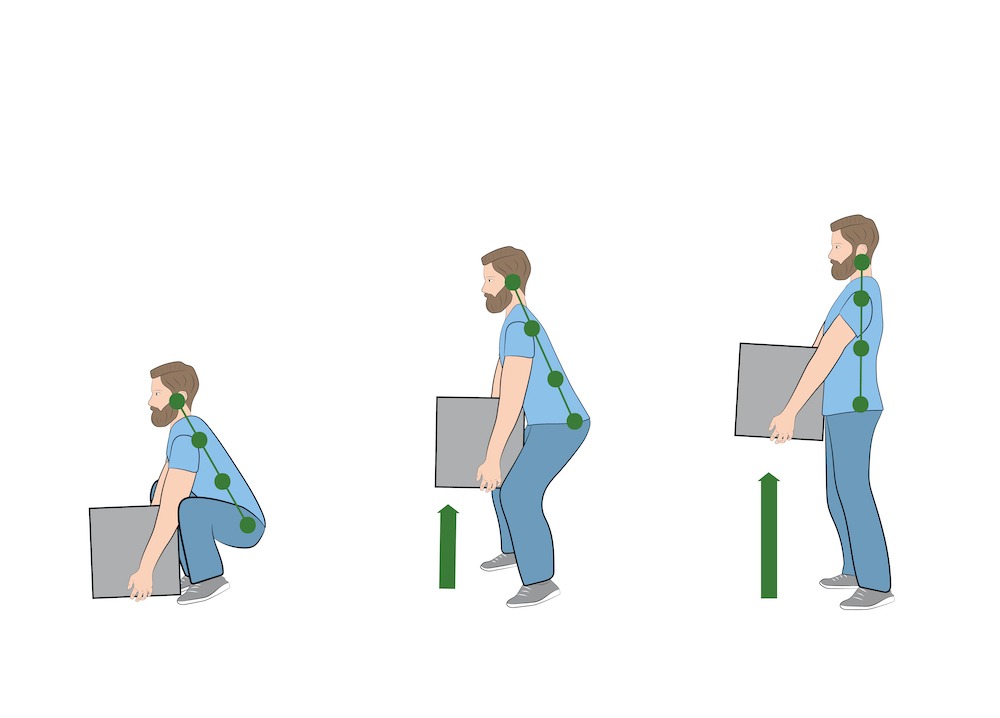Staying Healthy While You Work
Words: Cass Stern
Words: Cassandra Stern
Photos: Lisovskaya, skynesher
You’ve started your day off right. You got a good night’s sleep, enjoyed a healthy breakfast, and stretched your body to warm up. After you hop in your truck and arrive at work, you head out to the jobsite to start your day. However, just because you’re starting your workday, does not mean you should ever stop working at staying healthy. As you know, masonry is a very vigorous and physically demanding career.
From the very beginning as a hod carrier or tender, you are lifting, bending, twisting, pulling, stretching, and kneeling all day long. Some work requires that you contort your body into odd or uncomfortable positions for long periods of time, while other work demands hours of repetitive motions. Considering the average CMU weighs between 30-35 pounds, that’s a lot of heavy lifting!
The result? Long-term wear and tear on your body, not to mention the ever-present risk of accident or injury. When working at height, for example, one misstep can be the difference between a routine day and a serious situation. Back, shoulder, and knee injuries, in particular, are especially common in the construction industry, but also because there is not enough consideration given to prevention.
Prevention is often the best medicine, and this is definitely the case when it comes to the care and maintenance of your body. A nutritious breakfast and regular stretching exercises are definitely an important part of an overall health routine, but they are only a few parts of the overall puzzle. When you step onto the jobsite every day, be sure to keep these areas of focus in mind when it comes to staying healthy while you work.
Proper Lifting Techniques
 Correct posture to lift a heavy object safely. Illustration of health care. vector illustration
Correct posture to lift a heavy object safely. Illustration of health care. vector illustration
According to recent OSHA data, back injuries account for approximately 20% of workplace-related injuries overall, and there are 150,000 construction site accident injuries each year according to the Bureau of Labor Statistics, of which a sizable percentage are back and spine related. There are several reasons as to why the back, in particular, is so easily damaged.
The first is simply how fragile the human back and spine are. The back is a roadmap of delicate ligaments, discs, and muscles, and as we age something as simple as a violent sneeze in just the right way can throw them out of alignment. Working in masonry can cause a mason to bend into somewhat uncomfortable or unnatural positions, and it’s easy to accidentally lift with a twist or bend that will result in a pulled muscle or even a ruptured disc.
There are several ways to ensure you’re always following the best practices when it comes to lifting heavy loads.
- Never lift heavy loads alone- always ask for help for an overweight load that cannot be lifted safely by yourself.
- Use good sense when lifting heavy loads. Don’t be afraid to enlist the assistance of a mechanical aid.
- If you’re certain the load can be lifted safely and efficiently by yourself, be sure to observe safe lifting procedures.
If lifting solo, be sure to:
- Keep your body and especially your feet as close as possible to the base of the load.
- Square up, bend your knees, and slowly squat over the load. By doing so, your back will get extra support from your arms and legs.
- Tilt the load on its edge- this shift the center of the weight to as high off the ground as possible.
- While still in a deep squat, ensure feet are firmly planted with your body facing the load. With a straight back, grasp the load firmly with both arms.
- Maintain a straight back posture and use your legs to slowly lift the load and protect your lower back at all times.
- Don’t rush and remember if you can’t lift slowly, then you can’t lift safely.
Lifting properly may feel awkward at first, especially if you are not used to using the proper muscles or technique. Practice lifting weights in order to perfect your technique while at work. At the same time, exercising regularly will strengthen your core muscles, better protecting your body as you build up strength. Both at work and in the gym, it’s important to always listen to your body. You should notice pretty quickly if you’re using proper lifting techniques- if not, aches, pains, and soreness will let you know pretty fast!
Eating a Nutritious Lunch
All the stretching, lifting, and exercising in the world isn’t going to do you a lick of good without the proper fuel for your muscles to grow, recover, and function properly. Everything in your body needs nourishment, and it comes from different vitamins and minerals in our food and drinks. We also need a healthy mix of carbohydrates, fats, and proteins to get the energy our muscles need to burn away. A healthy breakfast is crucial to starting your day the right way but by lunchtime, even the hardiest of morning meals will have faded away. With limited time and options, many construction workers will opt for something quick and easy- but fast food is not the answer.
Fast food may be good and is quick and easy, but it’s full of hidden costs. Large amounts of sodium, fat, and sugar are okay every once in a while, but a balanced breakfast will not cancel out an artery-clogging lunch. Even worse, because fast foods (even salads!) are relatively nutrient-poor, you’ll likely find yourself tired, with a headache, and hungry again a short time after eating. Drive-thru or delivery may be tempting, and should definitely be a treat or special occasion, but when it comes to day to day, brown-bagging your lunch is the healthiest and most cost-effective option many times over.
By bringing your own lunch, you will not only extend your lunch break by eliminating the unnecessary trip to pick up food, but will also be able to enjoy something you know you will like. The options are endless! By stocking up on protein-dense foods, you’ll remain fuller and more satisfied longer, full of the energy you need to push through and remain productive through the end of the day.
Remember to be mindful of your lunch choices, as a lunch bag full of chips, candy, and soda isn’t much different than a trip to the convenience store. Small substitutions, like swapping soda for water or hummus for mayonnaise are easy ways to cut back on empty calories and make your lunches healthier. The next time you’re tempted with your favorite takeout, use it as inspiration and bring a lighter homemade stir fry for lunch the next day instead!
Healthier Means Safer
 Healthy food clean eating selection: fruit, vegetable, seeds, superfood, cereal, leaf vegetable on gray concrete background
Healthy food clean eating selection: fruit, vegetable, seeds, superfood, cereal, leaf vegetable on gray concrete background
It’s not easy to always make the right choices, and sometimes you won’t. But if you remain mindful and do your best to make intentional healthy decisions as often as you can, you’ll soon start reaping the benefits! Eating right and caring for your body will give you more energy. You’ll feel better overall, will sleep more restfully, may even notice a more youthful glow to your skin. As you continue to make positive changes to your lifestyle, you may even notice you’re laying brick and block faster than ever before! Start small, but make big changes, and you’ll be surprised how great you feel!